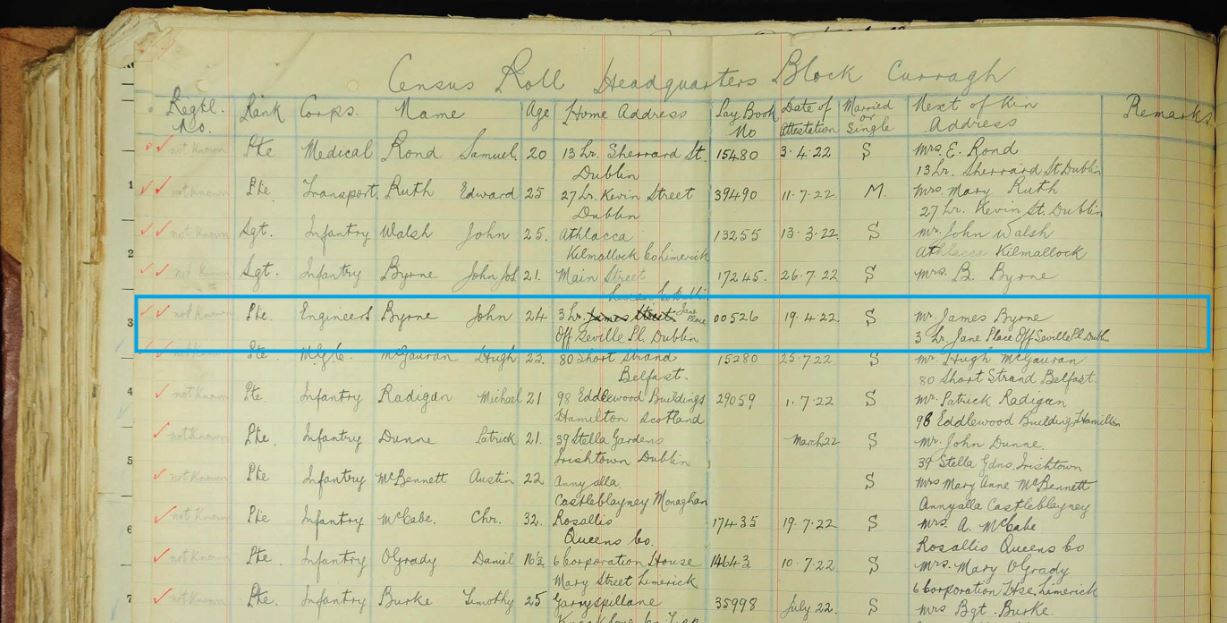I love finding ancestors in census records, probably because so few Irish censuses have survived intact. An Army Census was taken at midnight on 12 November 1922, during the first year of the Irish Free State. It records more than 33,000 members of the newly formed National Army, including quite a few of my relatives. The Military Archives of Ireland has now created a digital index to this census and made it freely available online, together with copy images of the original returns.
My maternal granduncle, John Byrne, the eldest son of James Byrne and Christina Devine, served as a lieutenant in Ireland’s National Army (also known as the Free State Army) and is recorded in this Army Census. Then aged twenty-four years and single, he was a member of the Engineers Corps and, at the time of the census, was stationed at ‘Headquarters Block, The Curragh, Co. Kildare'. His home address was given as 3 Lower Jane Place, off Seville Place, Dublin, the same address as his father, who was listed as his next of kin.
 |
Lieutenant John Byrne, Irish Army Census, 1922 (click on image to enlarge)
|
Family lore recollects another story about my granduncle John that occurred in this period in Irish history. John was said to have been granted the honour of first raising the Irish Tricolour, in place of the Union Flag, at Dublin Castle, after the British command handed it over to the Irish Free State Government. What a privilege this must have been for him!
Celebrations were short-lived, however. Many in Ireland rejected the Anglo-Irish agreement and Civil War soon broke out. The National Army was initially made up of units of volunteers from the Irish Republican Army, although it expanded rapidly in the early months of the Free State. The Civil War saw men, like my granduncle John, sadly forced to fight the Anti-Treaty forces, those same men that had just previously been their comrades in the fight for Irish independence.
The 1922 army census can be searched on the Military Archives of Ireland web-site.
.................
.................
© 2014 Black Raven Genealogy



